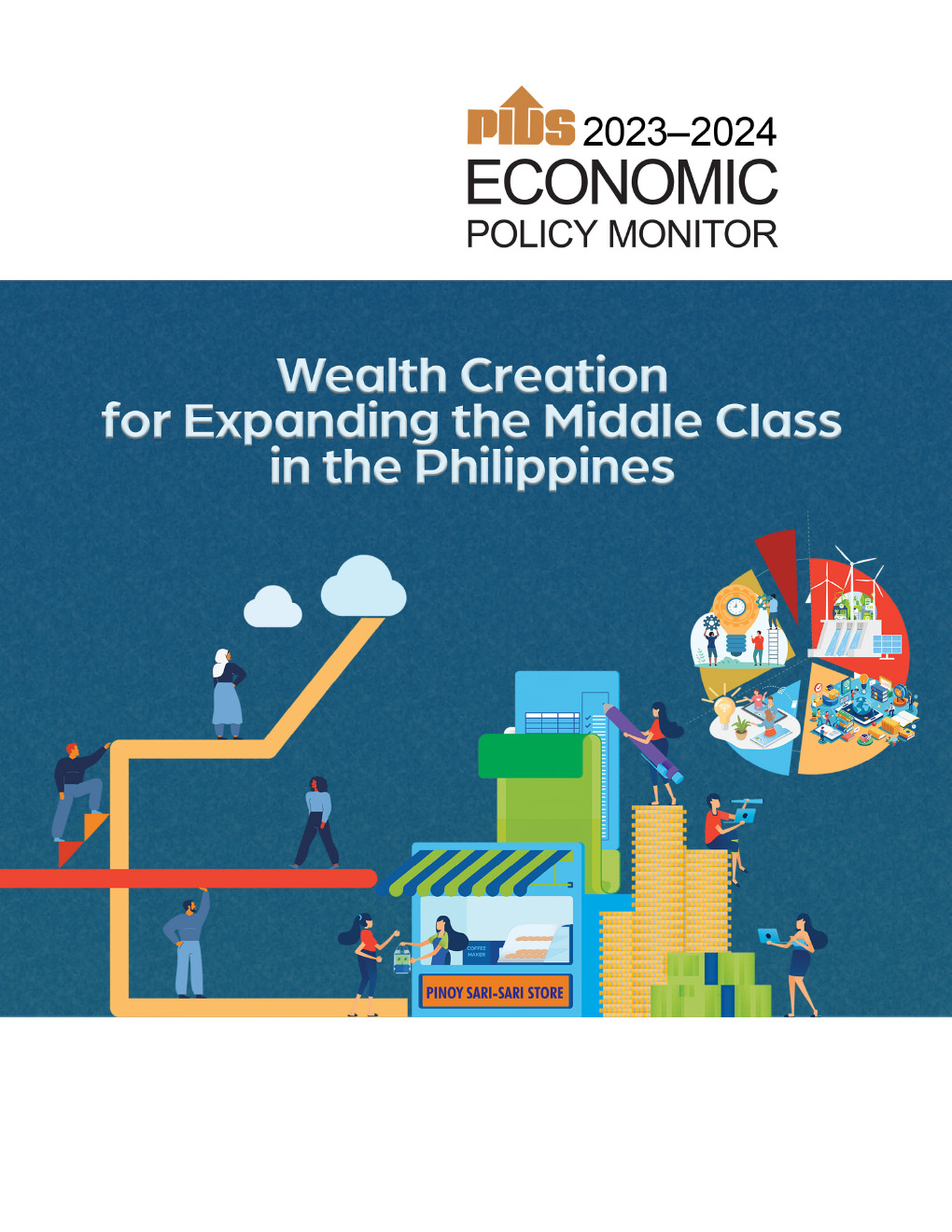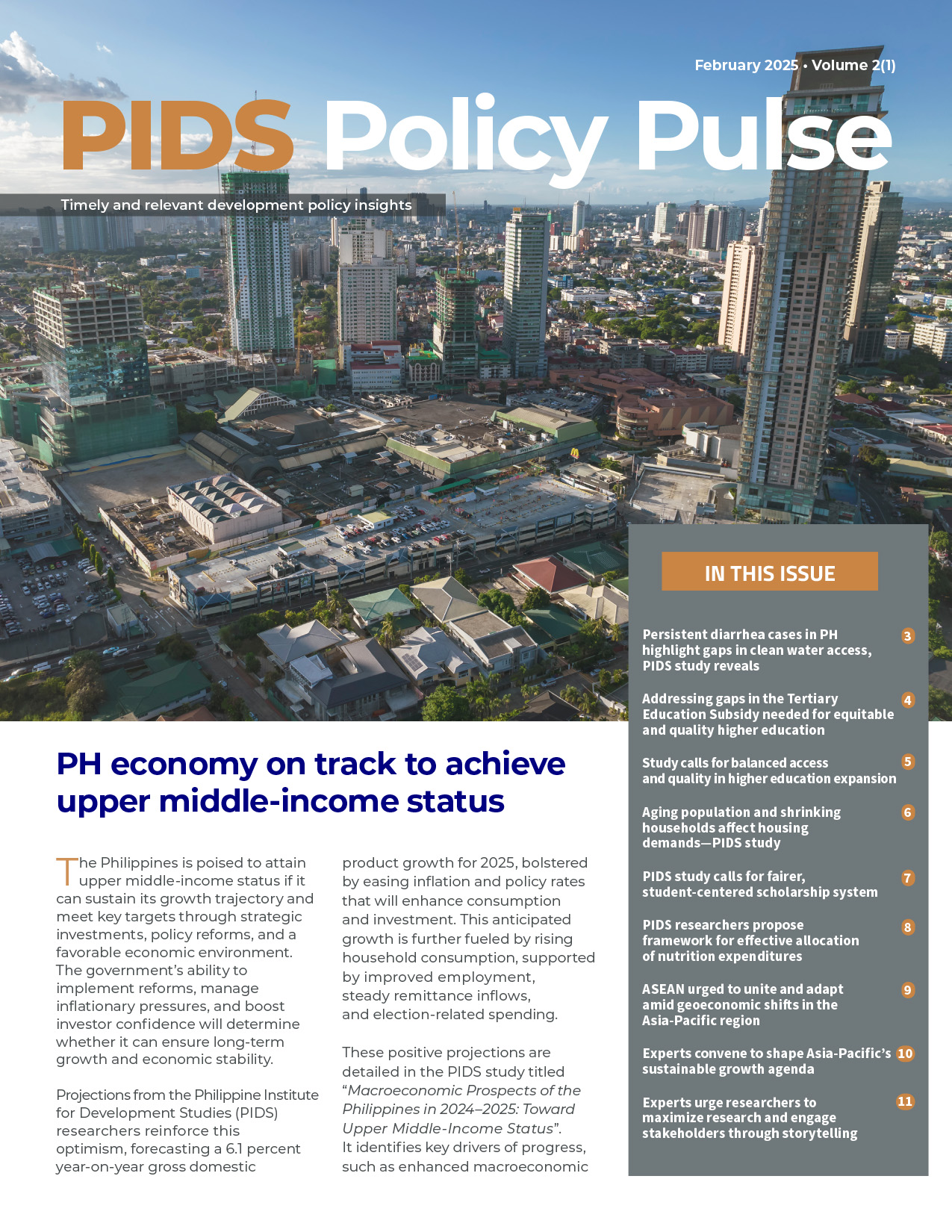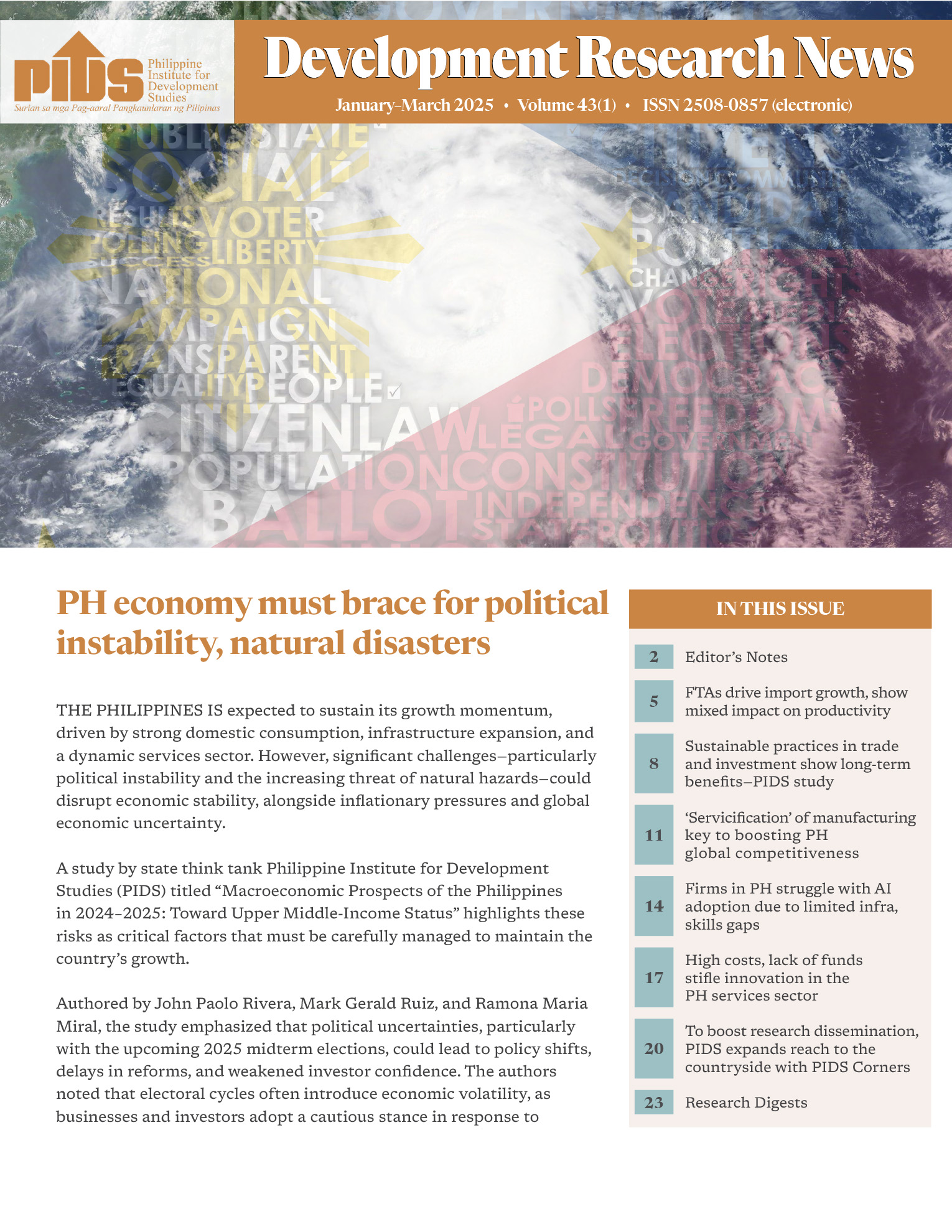The country needs to undertake policies to accelerate productivity growth in the long run across all sectors especially in agriculture, which remains a key sector for inclusive growth and poverty alleviation, according to the Philippine Institute for Development Studies (PIDS).
PIDS senior research fellow Roehlano Briones identified elements for boosting total factor productivity (TFP) growth, which are research and development (R&D), innovation, adoption of technology, improved practices and systems, and public goods such as transport infrastructure.
It suffices to say that TFP is generally not increased by price support policies for agriculture, nor by subsidies on private goods, contrary to the current thrust of agricultural policy,” he said in a discussion paper titled “Outlook for the Philippine Economy and Agro-Industry to 2030: The Role of Productivity Growth”.
Briones also cited analysis emphasizing industry-service TFP over that of agriculture “if the goal is sustaining rapid, economywide growth.
Maintaining productivity growth for industry-services, trend rates suffices to reach PDP (Philippine Development Plan) growth targets, despite weak TFP growth for agriculture,” he added.
PDP aims to transform the Philippines into an upper middle income economy by 2022, with an income of USD5,000. This represents a 41 percent jump over its 2015 level of USD3,550.
Overall poverty is seen to decline from 21.6 percent in 2015, to only 14 percent in 2022.
Briones further noted that productivity growth of agriculture impacts strongly on agriculture itself, but not on the industry-services sectors.
Conversely, productivity growth in the latter strongly impacts on itself and GDP (gross domestic product), but not on agriculture,” he said. (PNA)<
PIDS senior research fellow Roehlano Briones identified elements for boosting total factor productivity (TFP) growth, which are research and development (R&D), innovation, adoption of technology, improved practices and systems, and public goods such as transport infrastructure.
It suffices to say that TFP is generally not increased by price support policies for agriculture, nor by subsidies on private goods, contrary to the current thrust of agricultural policy,” he said in a discussion paper titled “Outlook for the Philippine Economy and Agro-Industry to 2030: The Role of Productivity Growth”.
Briones also cited analysis emphasizing industry-service TFP over that of agriculture “if the goal is sustaining rapid, economywide growth.
Maintaining productivity growth for industry-services, trend rates suffices to reach PDP (Philippine Development Plan) growth targets, despite weak TFP growth for agriculture,” he added.
PDP aims to transform the Philippines into an upper middle income economy by 2022, with an income of USD5,000. This represents a 41 percent jump over its 2015 level of USD3,550.
Overall poverty is seen to decline from 21.6 percent in 2015, to only 14 percent in 2022.
Briones further noted that productivity growth of agriculture impacts strongly on agriculture itself, but not on the industry-services sectors.
Conversely, productivity growth in the latter strongly impacts on itself and GDP (gross domestic product), but not on agriculture,” he said. (PNA)<












